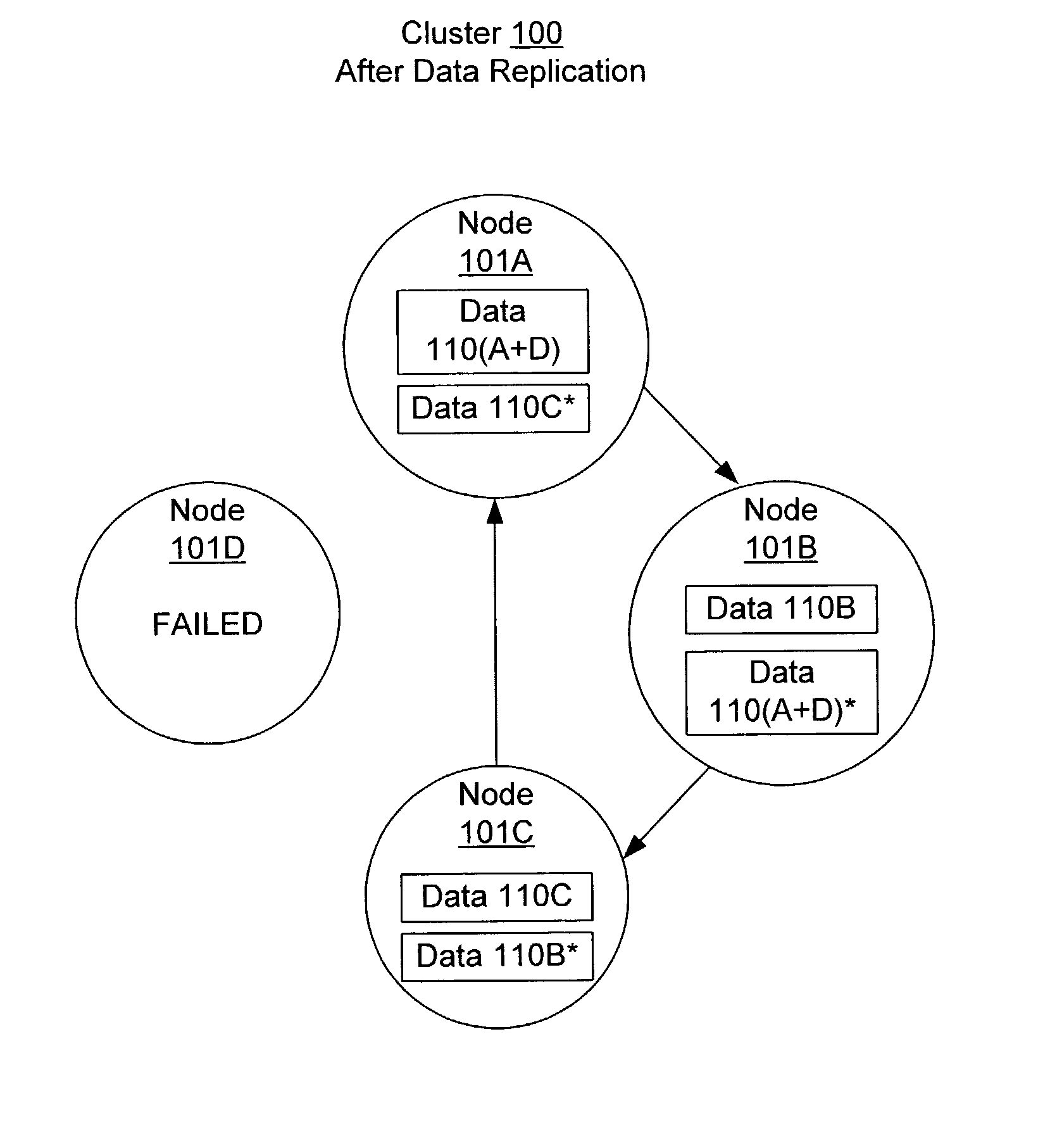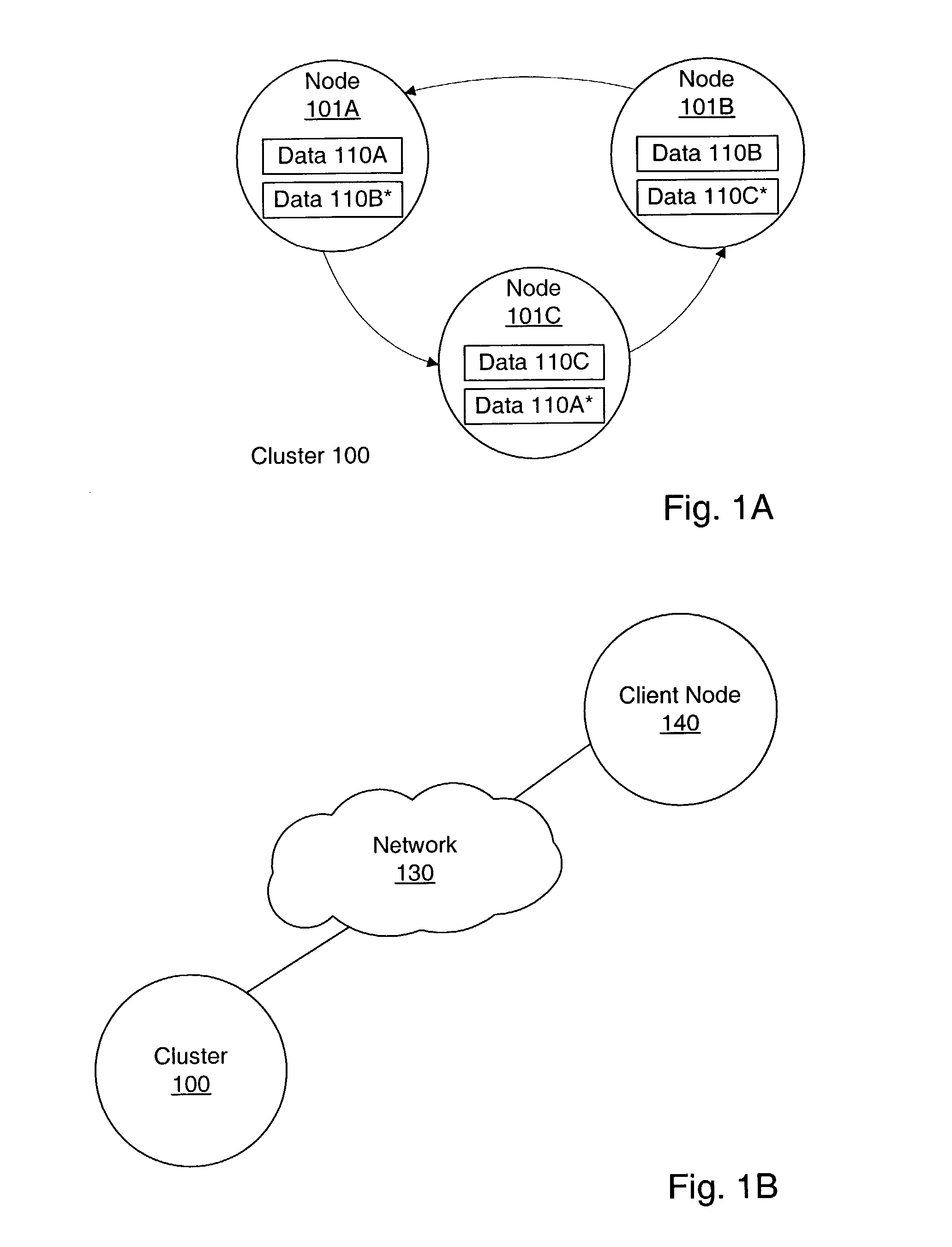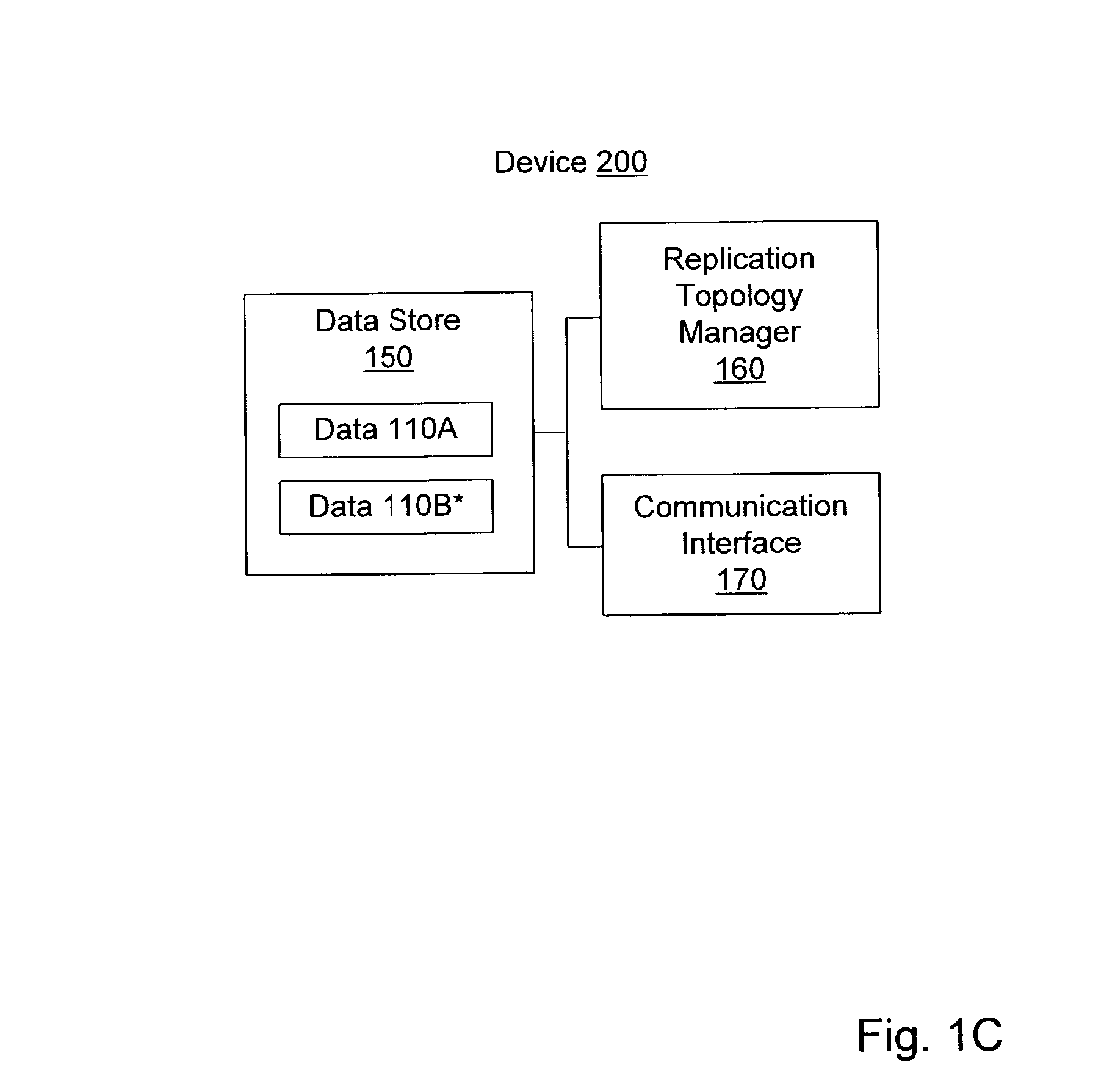System and method for reforming a distributed data system cluster after temporary node failures or restarts
- Summary
- Abstract
- Description
- Claims
- Application Information
AI Technical Summary
Problems solved by technology
Method used
Image
Examples
Embodiment Construction
[0021] FIG. 1A illustrates one embodiment of a cluster 100 that includes nodes 101A-101C. Cluster 100 is an example of a distributed data system cluster in which data is replicated on several nodes. As used herein, a "node" may be a stand-alone computer, server, or other computing device, as well as a virtual machine, thread, process, or combination of such elements. A "cluster" is a group of nodes that provide high availability and / or other properties, such as load balancing, failover, and scalability. For example, replicating data within a cluster may lead to increased availability and failover with respect to a single node failure. Similarly, subsets of a cluster's data may be distributed among several nodes based on subset size and / or how often each subset of data is accessed, leading to more balanced load on each node. Furthermore, a cluster may support the dynamic addition and removal of nodes, leading to increased scalability.
[0022] Nodes 101A-101C may be interconnected by a ...
PUM
 Login to View More
Login to View More Abstract
Description
Claims
Application Information
 Login to View More
Login to View More - R&D
- Intellectual Property
- Life Sciences
- Materials
- Tech Scout
- Unparalleled Data Quality
- Higher Quality Content
- 60% Fewer Hallucinations
Browse by: Latest US Patents, China's latest patents, Technical Efficacy Thesaurus, Application Domain, Technology Topic, Popular Technical Reports.
© 2025 PatSnap. All rights reserved.Legal|Privacy policy|Modern Slavery Act Transparency Statement|Sitemap|About US| Contact US: help@patsnap.com



